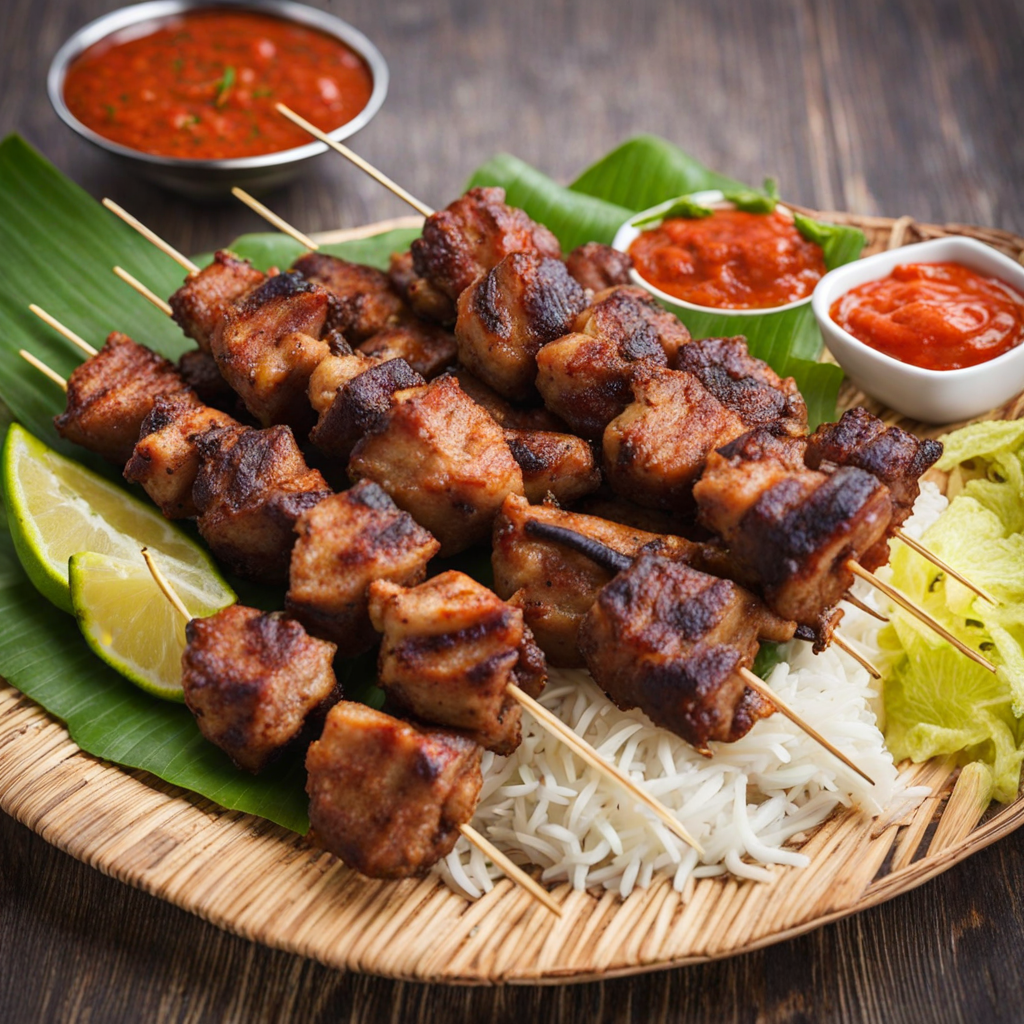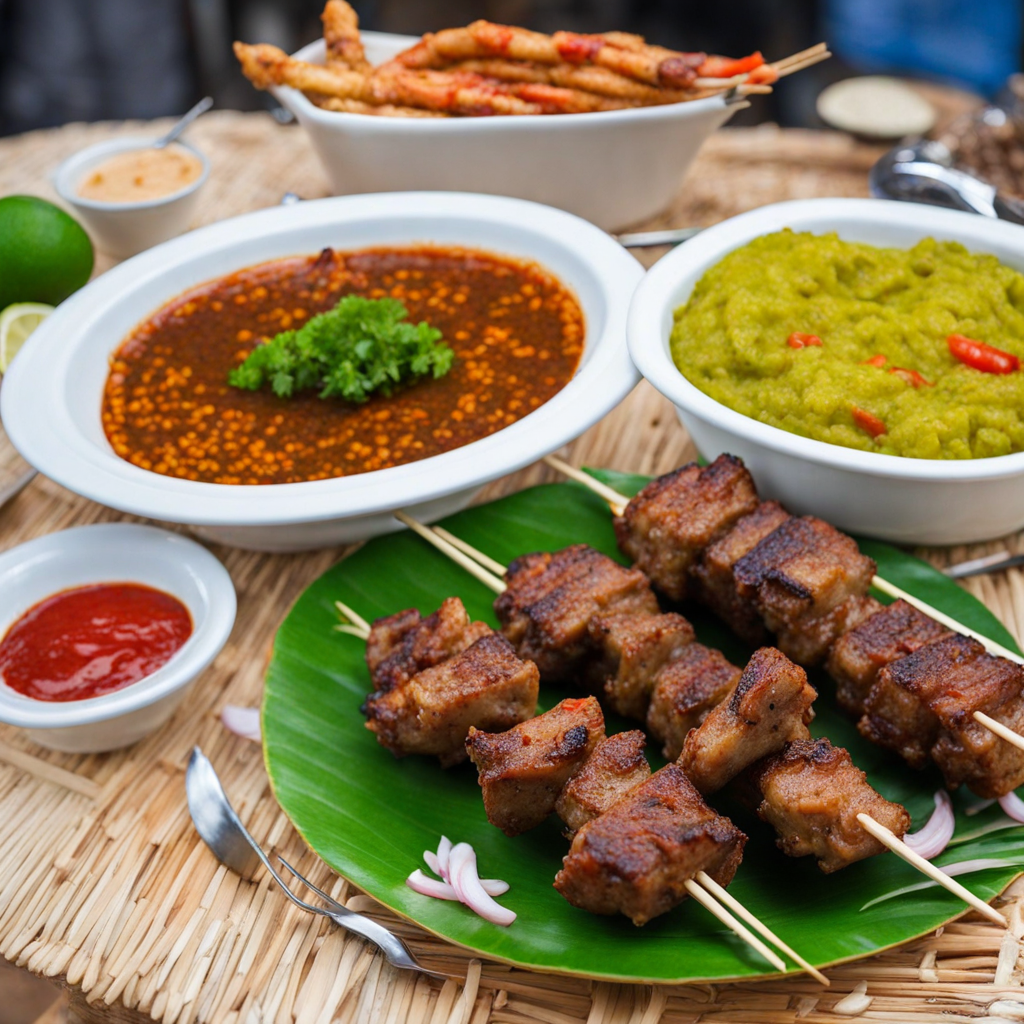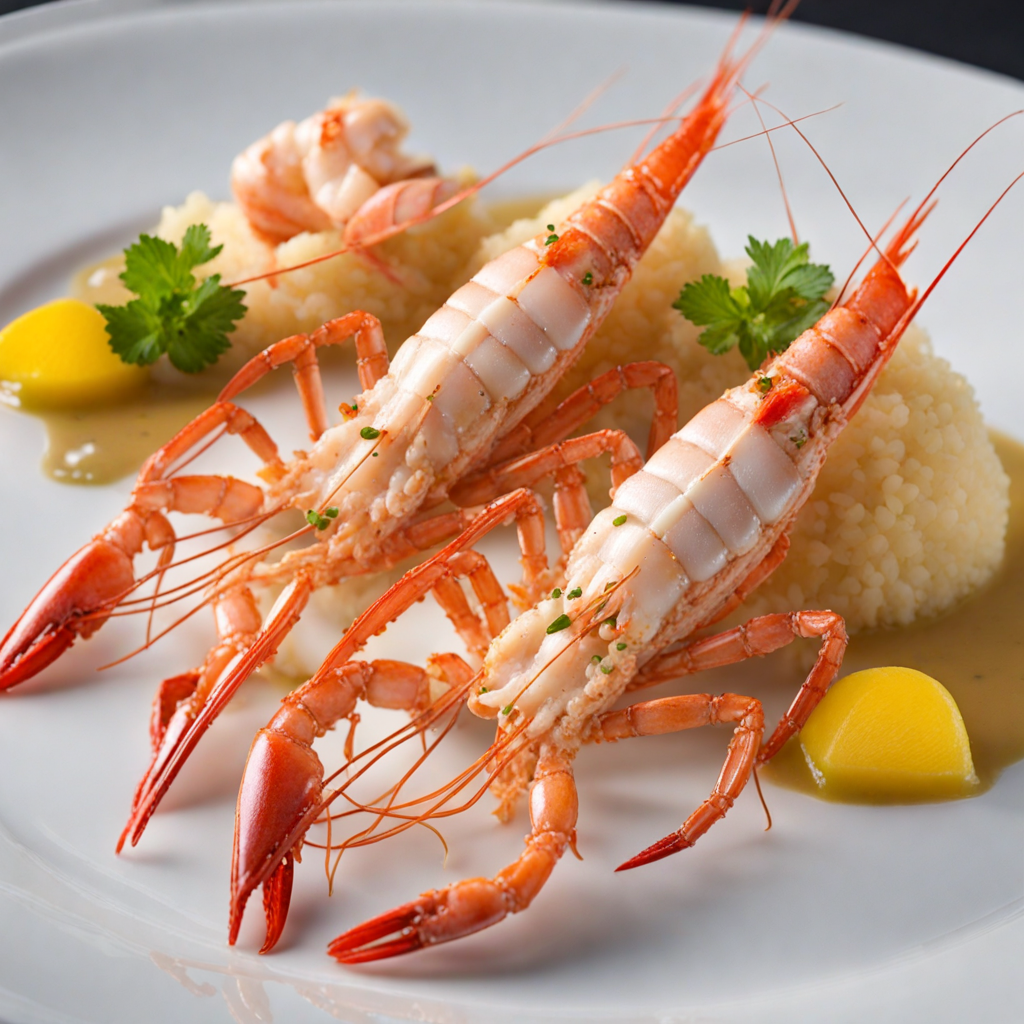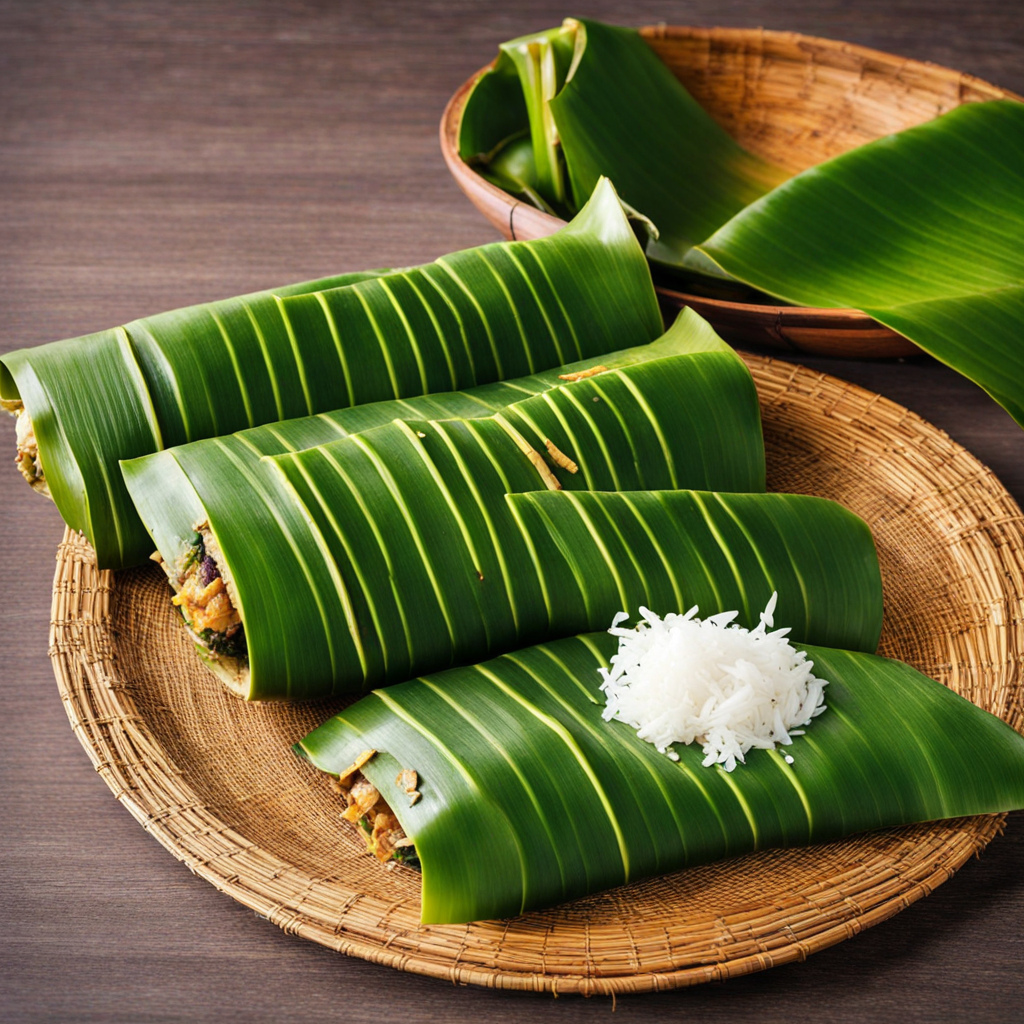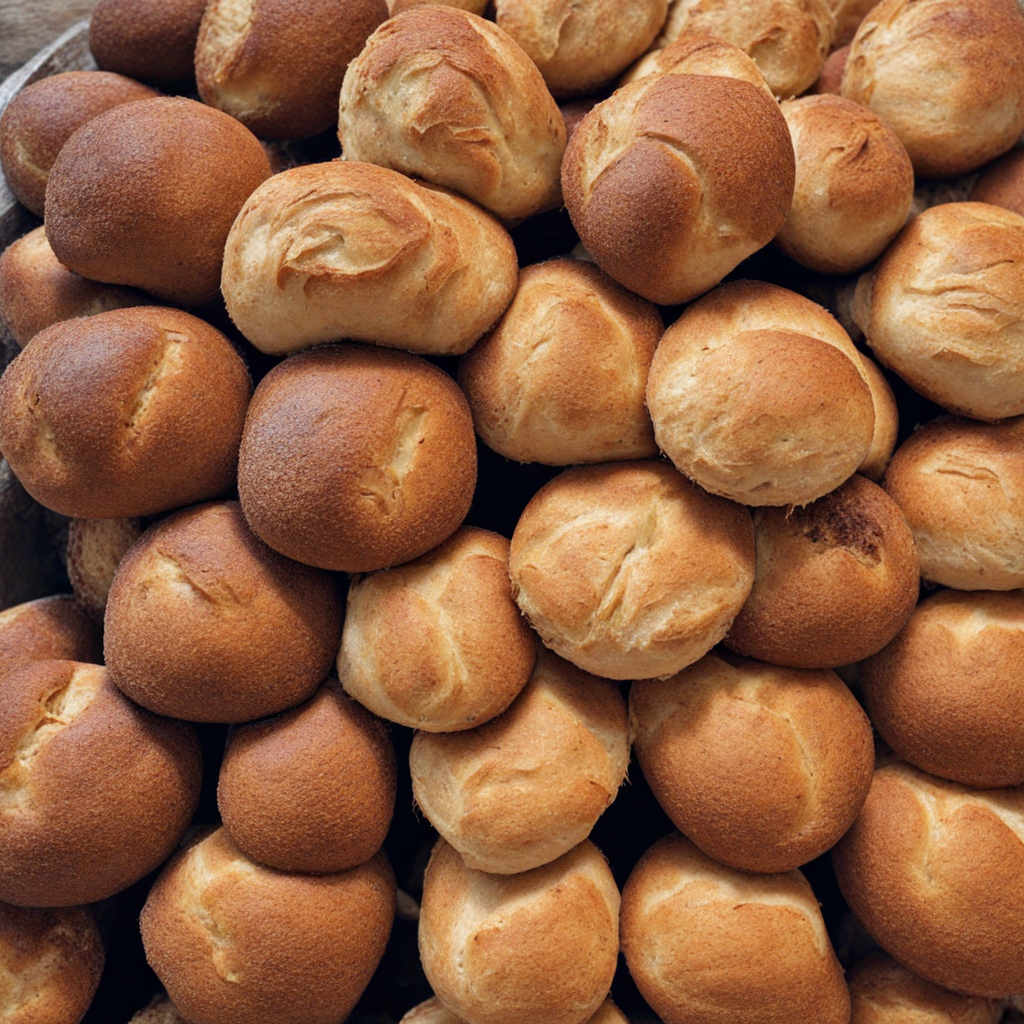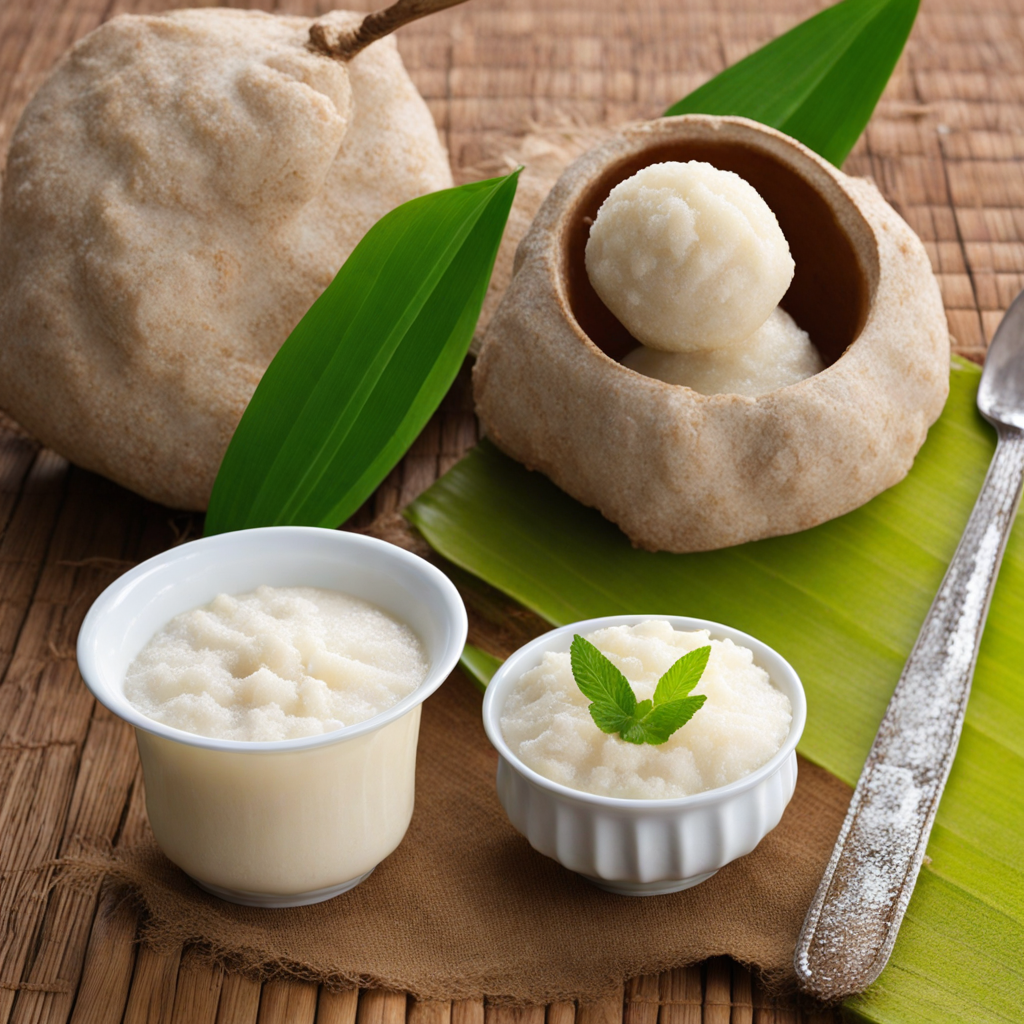Mshakiki
Mshakiki is a delightful culinary treasure from the Comoros, known for its vibrant flavors and aromatic spices. This dish typically consists of marinated skewered meat, often beef or chicken, that is seasoned with a blend of local spices, including cloves, nutmeg, and pepper. The marinade often incorporates coconut milk, which adds a rich creaminess and subtle sweetness, enhancing the natural flavors of the meat. The skewers are then grilled to perfection, resulting in a smoky, charred exterior that contrasts beautifully with the tender, juicy interior of the meat. Each bite of Mshakiki is a celebration of the Comorian spirit, as the dish is often served at communal gatherings and festive occasions. Accompanying the skewers, you may find a variety of side dishes, such as spicy sauces, grilled vegetables, and flatbreads that complement the main attraction. The combination of textures and flavors creates a harmonious experience, inviting you to savor every morsel while enjoying the convivial atmosphere typical of Comorian dining. To truly appreciate Mshakiki, one must embrace the cultural context in which it is enjoyed. Sharing this dish with family and friends is an integral part of the experience, as it fosters connection and warmth. As you explore Mshakiki, you're not just discovering a new flavor; you're immersing yourself in the rich culinary heritage of the Comoros, where each ingredient tells a story and every meal is a gathering of hearts.
How It Became This Dish
Mshakiki: A Culinary Journey Through Comoros #### Origins Mshakiki is a traditional dish from the Comoros, an archipelago located in the Indian Ocean between Madagascar and the coast of Mozambique. The islands of Comoros—Grande Comore, Mohéli, Anjouan, and Mayotte—have a rich tapestry of cultural influences, including African, Arab, French, and Malagasy, which is reflected in their diverse culinary practices. The origin of mshakiki can be traced back to the ancient trade routes that connected these islands with Africa and the Middle East, allowing for the exchange of spices, cooking techniques, and culinary traditions. The name "mshakiki" derives from the Arabic word "shish," meaning skewered meat, emphasizing the dish's method of preparation. Traditionally, mshakiki consists of marinated pieces of meat—often chicken, beef, or goat—that are skewered and grilled over an open flame. This method of cooking is reminiscent of the kebabs found in Middle Eastern cuisine and has been adapted by the Comorian people to incorporate local flavors and ingredients. #### Cultural Significance In Comorian culture, food is a vital component of social life and is often associated with hospitality, celebration, and community. Mshakiki is frequently served at gatherings such as weddings, religious festivals, and family reunions, where it serves as a centerpiece that brings people together. The act of sharing food is deeply ingrained in the Comorian way of life, symbolizing unity and the importance of familial bonds. Mshakiki is also representative of the islands' culinary identity. As a dish that showcases the use of local ingredients, it reflects the agricultural practices of the Comoros, where spices such as cloves, vanilla, and ylang-ylang are cultivated. These spices are often used in the marinade for mshakiki, imparting a unique flavor profile that distinguishes it from similar dishes found in other cultures. #### Development Over Time The development of mshakiki over the years illustrates the dynamic nature of Comorian cuisine, which continues to evolve while preserving its traditional roots. The dish has been influenced by various cooking techniques and tastes brought by traders and settlers throughout history. The introduction of grilling and skewering to the islands can be attributed to the Arab traders who frequented the region, bringing with them their culinary customs. In the late 19th and early 20th centuries, French colonial influence began to permeate Comorian society, leading to the incorporation of French cooking styles and ingredients into local cuisine. This fusion can be seen in the use of marinades and sauces that might include elements of French gastronomy, such as herbs and butter, alongside traditional spices. This blending of flavors not only enriched the taste of mshakiki but also allowed it to gain popularity among a broader audience, including European settlers and visitors to the islands. With the advent of globalization in the late 20th century, Comorian cuisine began to attract attention from food enthusiasts and chefs around the world. Mshakiki, in particular, started to appear on international menus, celebrated for its vibrant flavors and unique preparation methods. As Comorian communities abroad sought to preserve their culinary heritage, they adapted traditional recipes to cater to the tastes and dietary preferences of their new surroundings, often using locally available ingredients. Despite these changes, the essence of mshakiki remains intact. Traditional preparation methods are still honored, with many families passing down recipes and techniques through generations. The dish is often prepared during family gatherings, where the process of marinating and grilling becomes a communal activity, reinforcing the bonds between family members. #### Ingredients and Preparation The preparation of mshakiki is a labor of love, involving the careful selection of ingredients and attention to detail. The key components include marinated meat, typically chicken or beef, cut into bite-sized pieces. The marinade often features a blend of spices, including garlic, ginger, turmeric, and a variety of local herbs. Coconut milk is commonly used to tenderize the meat and impart a rich flavor. Once the meat is marinated—usually for several hours or overnight—it is skewered onto wooden or metal sticks. The skewers are then grilled over an open flame, allowing the meat to develop a charred exterior while remaining juicy and tender inside. The grilling process is not just about cooking; it is a sensory experience that fills the air with tantalizing aromas and creates a festive atmosphere. Mshakiki is typically served with accompaniments that enhance its flavor. Common side dishes include rice, a refreshing salad, and spicy sauces known as "sambals," which often feature chili peppers, onions, and tomatoes. This combination of flavors and textures makes for a satisfying meal that showcases the culinary artistry of the Comoros. #### Modern Context In contemporary times, the popularity of mshakiki has risen beyond the shores of Comoros, as food lovers around the world seek out authentic and diverse culinary experiences. Food festivals and cultural events celebrating Comorian heritage often feature mshakiki as a highlight, allowing chefs to showcase their skills while sharing the rich history of the dish with a new audience. Moreover, the rise of social media and food blogs has enabled home cooks and restaurateurs to share their interpretations of mshakiki, leading to further innovation and experimentation with the dish. Some variations may include the use of different meats, seafood, or even vegetarian options that cater to modern dietary preferences. #### Conclusion Mshakiki is more than just a dish; it is a reflection of the rich cultural heritage and culinary practices of the Comoros. Its origins, steeped in the islands' history of trade and cultural exchange, have allowed it to evolve while retaining its traditional roots. As the world continues to embrace diverse cuisines, mshakiki stands as a testament to the enduring significance of food in connecting people, celebrating heritage, and fostering community. Whether enjoyed at a festive gathering or in the comfort of home, mshakiki will undoubtedly continue to bring joy and flavor to the tables of those who appreciate its storied past.
You may like
Discover local flavors from Comoros


